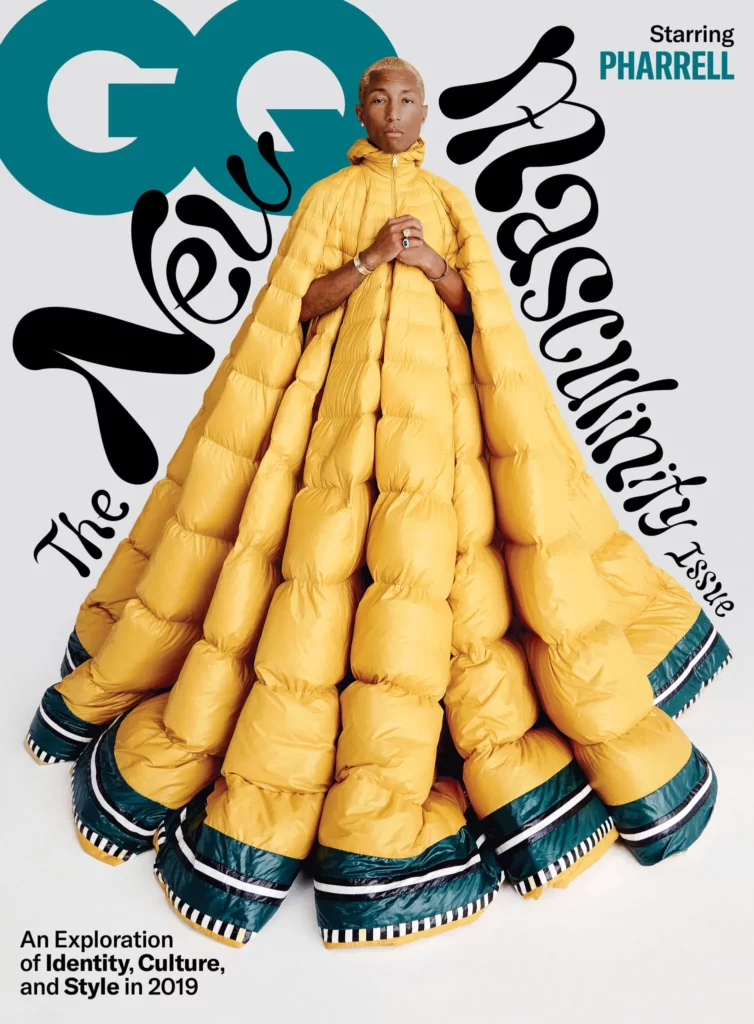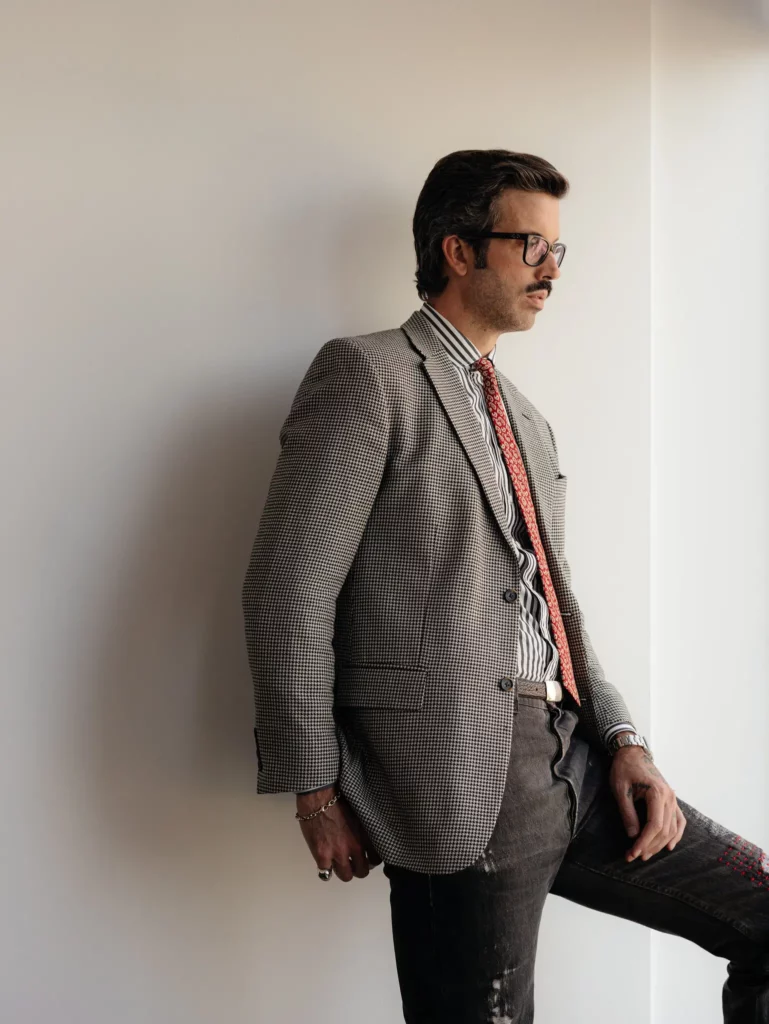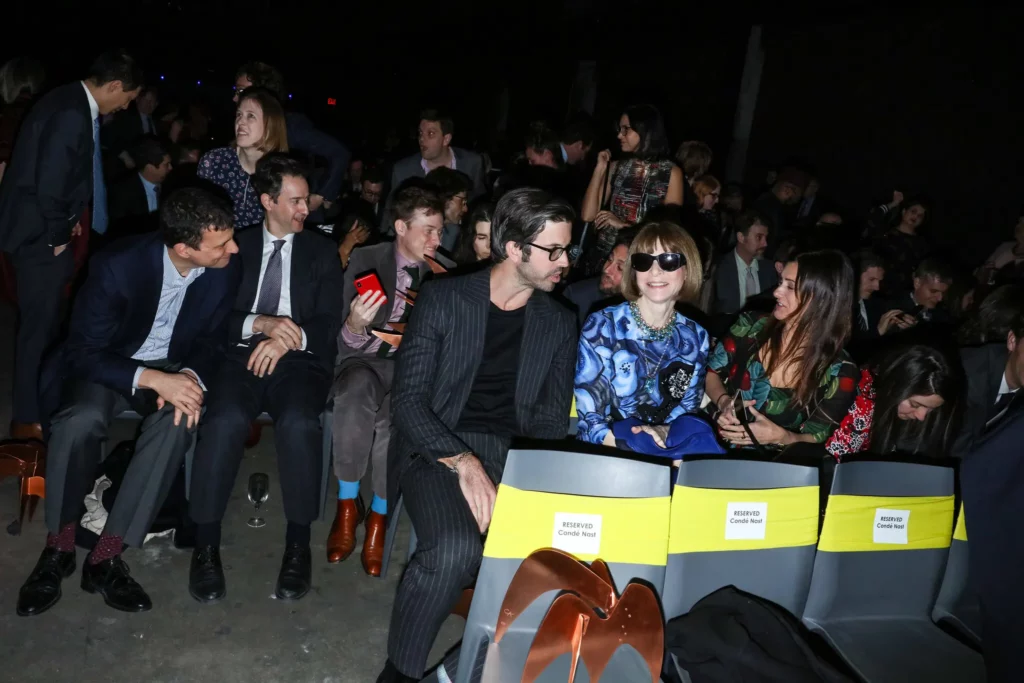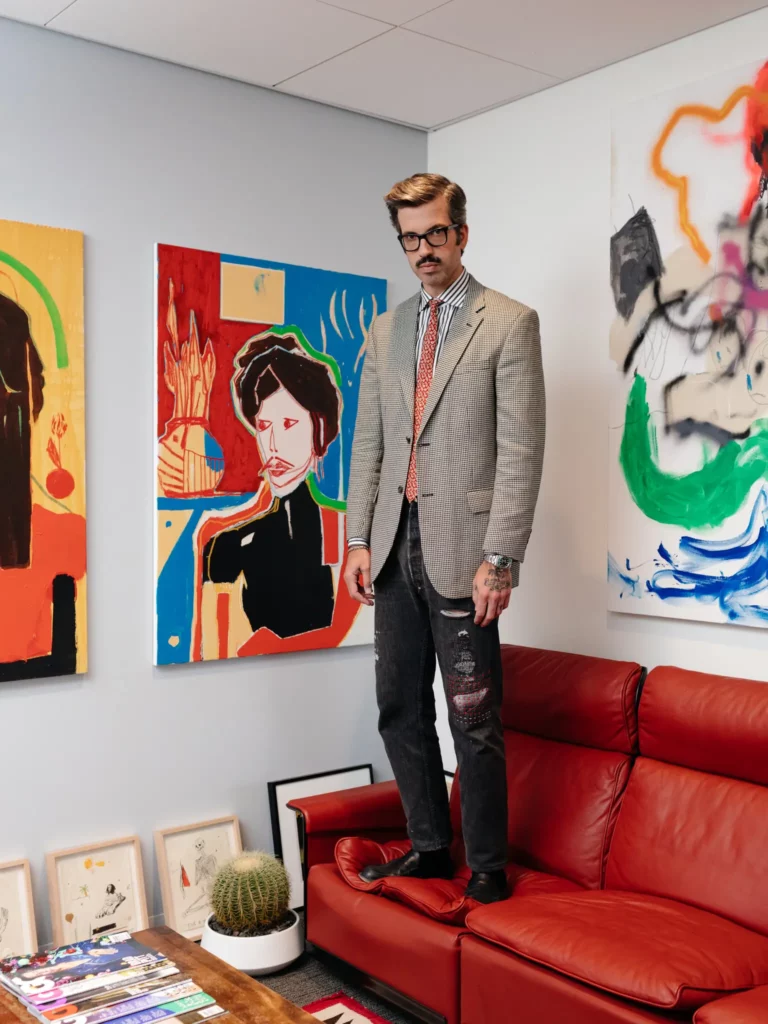Will Welch, the 41-year-old editor of GQ, towered over the other pedestrians as he walked along Church Street in Lower Manhattan on the first night of New York Fashion Week. He was dressed in a blue suit that had been custom-made for him by Ermanno Lazzarin, the proprietor of Eral 55, a men’s shop in Milan that GQ recently named one of the world’s 100 best clothing stores. Mr. Welch said he liked the fact that bespoke suits are never quite perfect: “All the fabric is cut by hand, so the pockets are always irregular.”
His Uber, a black S.U.V., pulled up to the curb. He adjusted his glasses and got in. He buckled his seatbelt and rested his left hand on his knee, exposing between his knuckles and wrist a tattoo of the words “want nothing” over the outline of a desert island.
As the car moved through sluggish traffic on the way to a party at Gracie Mansion, he mentioned that his favorite musical artists were Outkast and the Grateful Dead. “People are like, ‘What do you want on your gravestone?’” he said. “I always say, ‘Loved the Grateful Dead and Outkast.’”
The party — hosted by Mayor Eric Adams; Mr. Welch’s boss, Anna Wintour, the global chief content officer of Condé Nast; and Steven Kolb, the chief executive of the Council of Fashion Designers of America — had a start time of 6 p.m. Mr. Welch arrived at the security checkpoint outside the mansion at around 7. After he made it through a metal detector, the fashion designer Michael Kors took him in a bear hug.
Inside, Mr. Welch ignored the servers carrying trays of drinks and hors d’oeuvres, stopping to say a quick hello to Chioma Nnadi, the editor of Vogue.com. Then he bumped into Juan Costa Paz, Vogue’s creative director. As they chitchatted about their plans for coming fashion weeks in Milan and Paris, Mr. Welch reached into Mr. Paz’s Acne jacket and pulled out a pack of Marlboro Golds. Mr. Paz laughed, and Mr. Welch put it back.
There was no swagger in the way he carried himself, as if he didn’t want to make a show of his status as the editor of a magazine whose name is practically synonymous with dapper consumerism. Four years ago, when he was named the editor in chief of GQ, male journalists and male executives across the media industry were being drummed out of their jobs as their abusive behaviors came to light. And it looked like the strutting male magazine editor, once tagged with the term “dude-itor,” was going extinct.
“Yikes,” a friend said to Mr. Welch when he got the big job, he recalled in an editor’s letter. “Hell of a time to be in charge of a men’s magazine.”
Making Mr. Welch’s assignment more of a challenge was the fact that Condé Nast was digging out of a financial crisis by selling off some of its magazines, laying off employees and cutting the number of annual print issues for many of its titles, including GQ.
As he settled into his new role, Mr. Welch was only a few weeks removed from a health crisis, having had what he described as a “short operation” after a diagnosis of testicular cancer. In the wake of the successful surgery, he seemed cheerfully resilient, writing of the experience: “When Charles Darwin gave us each two balls, he intended one as a spare. Hallelujah.”
Through the fall of 2018, he set about remaking the magazine, which had been led by Jim Nelson for 15 years. During Mr. Nelson’s last year, GQ was one of the few magazines to have won a Pulitzer Prize. The award, in the feature writing category, honored a story by Rachel Kaadzi Ghansah on the white supremacist and terrorist Dylann Roof. Under Mr. Welch, the magazine has put less emphasis on lengthy feature articles and lavished attention on its website, social media accounts and videos.
Accompanying the changes was a retool of GQ’s stance on what it means to be a man. Mr. Welch trumpeted the publication’s post-#MeToo identity with a fall 2019 cover featuring the singer and producer Pharrell Williams in a quilted, gownlike Moncler coat, bracketed by the words “The New Masculinity Issue” in a froufrou font.
Shot by the photographer Micaiah Carter, it was the first in a series of GQ cover images that caught fire online, a necessity at a time when newsstands have become almost irrelevant to a magazine’s success. Underscoring the issue’s importance, Mr. Welch wrote the cover story himself, noting a connection between Pharrell’s “evolving fashion sensibility and his evolving sense of self.”

Brad Pitt underwent a New Masculinity makeover of his own for GQ’s August 2022 cover. He was photographed by Elizaveta Porodina on a bed of flowers in an electric blue Louis Vuitton shirt, looking like a cross between David Bowie circa Tin Machine and Joan Crawford in her later years. The internet went wild for days, with arguments for and against, bringing something exceedingly rare to a legacy magazine in 2022: attention.
“A controversial cover is by nature a good cover,” Ms. Wintour said in an email. “You want a cover to make people sit up and take notice, and get them talking — what is the point of a cover otherwise? Of course, Will knows this as well as anyone.”
Mr. Welch’s office on the 25th floor of One World Trade is windowless, befitting a top-of-the-masthead editor in these not-so-high-flying times for the magazine industry. He has a framed photograph of Malcolm X on his desk. Near the red sofa, tucked into a spot that Mr. Welch can see from his workstation, is a portrait of Ram Dass, the spiritual leader and author of “Be Here Now.”
“I like to keep my eye on him,” he said during an interview in his office on a quiet summer day.
Mr. Welch grew up in the Buckhead neighborhood of Atlanta. His mother was a clerk for the Georgia State Supreme Court, and his father was a lawyer. As a teenager, he was often on the basketball or tennis court, and he played drums in “a bunch of different rock ’n’ roll bands,” he said. After majoring in English at Columbia, he started his career as a music journalist on the staff of The Fader, writing profiles of Kanye West, the White Stripes, Big Boi and Jerry Garcia.
He joined GQ as an associate editor in 2007 and became the top editor of its spinoff, GQ Style, in 2015. Along the way, he married Heidi Smith, who describes herself on her website as a “psychosomatic therapist, herbalist, and flower essence practitioner.” They live in the Clinton Hill neighborhood of Brooklyn with their two cats.
Not long after Mr. Welch ascended to his current job, GQ’s advertising revenue shot upward, according to Condé Nast. In 2020, Mr. Welch got a shiny new title: global editorial director of GQ, which has 19 editions around the world, 11 owned and operated by Condé Nast (the others are licensed).
He said he had no choice but to give GQ a makeover.
“In my first days as editor, I just had this language — ‘the new masculinity’ — because the culture was demanding that men change, straight up,” Mr. Welch said. “We are a longstanding, decades-long men’s magazine. So what are we just going to do? Shoot fancy clothes and hope everybody applauds and keeps subscribing and clicking on our website? That is absurd.”

“It was an important moment for us to do two things,” he continued. “Reflect on this moment where the culture was demanding that men evolve, and lead; and show men what that evolution might look like.”
In his first editor’s letter, he noted that the “new iteration of GQ might not be for everyone.” But speaking this summer in his office, he said the magazine was not dictating a particular style to its readers.
“We’re not saying, ‘Men of America, dress in a gender-neutral way,’ or ‘Wear women’s clothes,’” he said, adding that the “mission” of the magazine has moved away from giving readers style tips and sex advice. “Instead, we’re going to show different forms of self-expression, almost like a mood board, and let you find yourself in it.”
Ms. Wintour said that, these days, it is hard for a magazine to get noticed.
“The challenges are in plain sight — for all of us,” she said in an email. “How do you capture your audience’s attention, month after month, day after day, across all of GQ’s platforms? How do you surprise them, and how do you support important journalism right now?”
Image

Mr. Welch works closely with Roxanne Behr, GQ’s global creative director, claiming to share a brain with her. He also has a running dialogue with Adam Baidawi, the magazine’s deputy global editorial director.
“I think I probably exchanged more WhatsApp messages with Will than my girlfriend, which is a lot,” Mr. Baidawi said. “You hear a lot about the old-school leadership style of an editor in chief, and that archetype was the genius with a thousand assistants. This person who would just decree, ‘This is the idea — go off and execute it!’ and then it’s ‘I don’t want to hear anything about it!’ The thing about Will is he’s the polar opposite of that.”
The rapper Future, who appeared on the magazine’s cover in May, used portraits from the GQ photo shoot as the main images for his latest album, “I Never Liked You.” “It felt like art,” he said. “I had already shot my cover for the album, but when I saw that image, it looked like how the album sounded, and I knew then that was the album cover.”
He suggested he has been going through changes that mirror the changes in the magazine’s identity.

“I am evolving as a human being and as an artist, and I think it is my duty as an artist to show my fans my evolution,” Future said. “Will is from Atlanta, and he has always supported me and my career, so it makes me feel like I am talking to my brother who has been watching me grow.”
For the latest issue, Mr. Welch jettisoned the usual cover suspects altogether, presenting Alexandria Ocasio-Cortez in a power pose. The profile assignment went to Wesley Lowery, a former Washington Post reporter who won a Pulitzer Prize for his articles on police violence before he tangled with his boss at the time, Martin Baron, over the paper’s coverage of race and the justice system.
“It is still a fashion magazine,” Mr. Welch said. “It is still GQ. But there is this other movement happening, and for us it is always on.”



















Comments